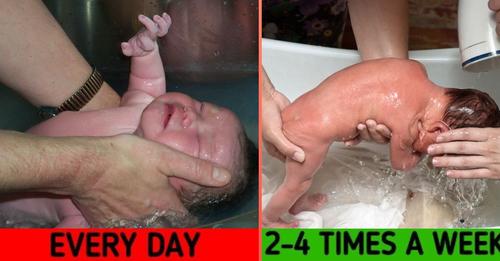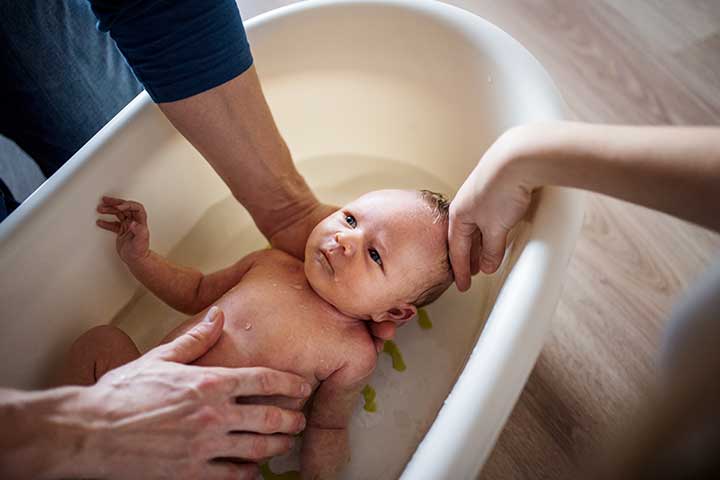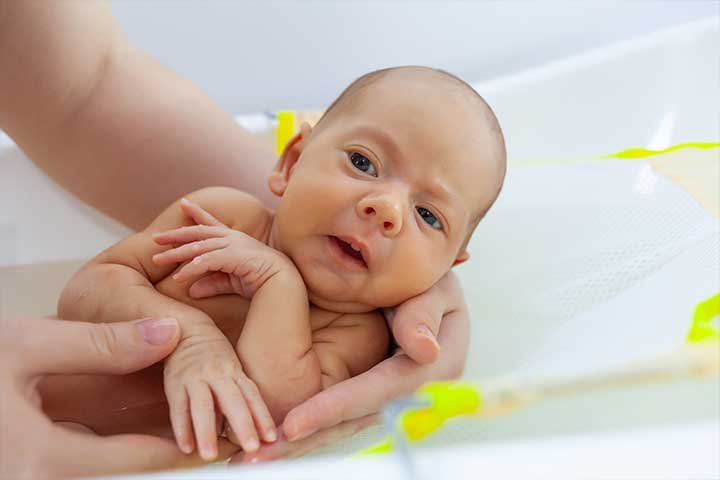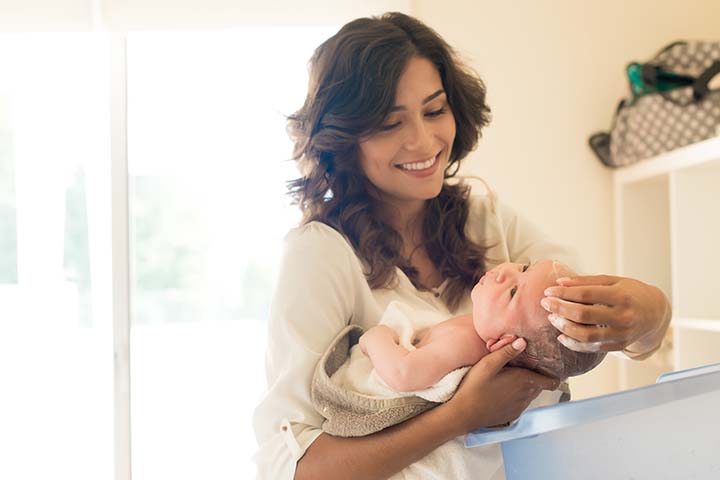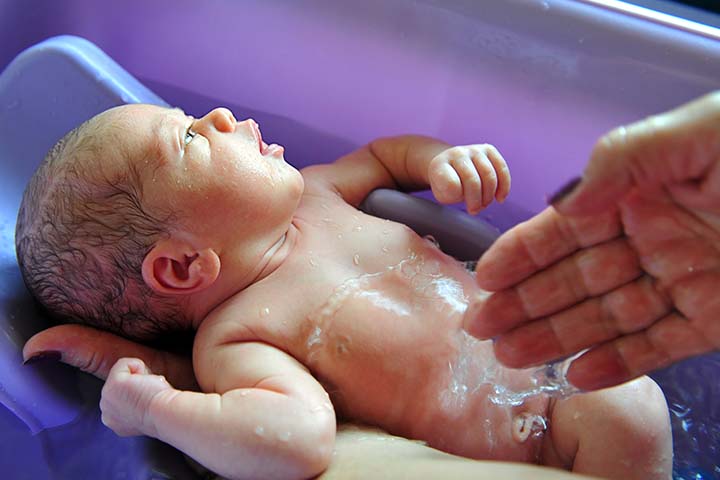
Bathing a newborn for the first time almost feels similar to dismantling a ticking time bomb. One mistake and your baby might be shrieking at a decibel that could make your ears bleed! And, of course, like all new parents, you have a list of thousand scenarios in your head that could go wrong. So, how do you go about bathing your baby without having a nervous breakdown? Well, we are here to help. Here in this article are a few things you need to know about bathing your newborn that will help you become a pro parent in no time. Read on to know them all.
When Should You Give Your Baby Their First Bath
It was formerly believed that newborns needed to be washed immediately after birth. However, medical professionals’ views have evolved over time. The World Health Organization advises waiting at least 24 hours following the birth before giving your newborn infant a bath (1). If this is done, the newborn will have an easier time adjusting to life outside the womb. The vernix that coats a newborn infant at birth is a waxy substance that acts as a natural moisturizer, and also helps the baby fight germs. Additionally, this can prevent the infant’s body temperature and blood sugar from falling (2).
How Often Should You Bathe Your Baby
You have likely heard that babies require a daily wash. Experts, however, disagree with this assessment. In the first few months of life, a baby only needs to be bathed two to four times per week, provided proper care is taken during the day (daily wiping and washing of the diaper region, frequent hand wiping). Babies don’t need to be bathed daily because they don’t perspire heavily or often become dirty. In contrast, too much bathing might damage your baby’s delicate skin. Keep your baby’s skin clean in between bathing by checking the creases of their skin often. Pay special attention to the groin, chin, and inner thighs.
How To Bathe The Baby If The Umbilical Stump Has Not Fallen Off Yet
Pediatricians advise substituting tub baths for sponge baths until the cord stump comes off. You may compare a sponge bath to a conventional bath and find many similarities. You should pick a room that is bright and well-lit. Place the baby on a level, reasonably hard surface (a changing table, nightstand, and firm bed would serve) and cover them with a swaddling blanket or towel. Set up a basin with hot water. Test the temperature of the water to ensure it’s not too hot or too cold. Next, get a clean diaper, a fresh set of clothing, a washcloth, a towel, and some fragrance-free baby soap. Put some warm water on a washcloth, wring it out, and use it to gently clean the baby’s face.
As you work your way down, expose different regions of the baby’s body to be wiped with the sponge at random intervals. Those folds beneath the armpits, behind the ears, at the base of the neck, and around the diaper region need your careful attention. Next, clean your infant’s hands and feet. Again, a small amount of soap is acceptable for various uses on the body. But once you’re done, give them a good rinsing. After you’re done washing your baby, make sure to thoroughly dry them before dressing them in a clean diaper and outfit.
How To Bathe Your Baby After The Umbilical Stump Falls Off
You should get a baby bath, two towels, a clean nappy, and fresh clothing ready. Next, measure the temperature of the water by pouring a small amount into the tub. During the first month, it’s best to only use warm water and no other soaps or cleansers while bathing your infant. First, put the baby on your lap and wipe their face before putting them in the water. Next, massage the baby’s head gently while you rinse it under running water and pat it dry with a towel while holding the infant over the sink. Finally, remove the diapers and clean the baby’s bottom with a moist towel after you bathe the baby’s upper body. After you’ve done everything else, give the infant a bath. Ensure you’re holding their shoulders and head, so the water doesn’t get to their upper torso. Next, pour the water over your baby’s body using your free hand to massage his or her skin. Finally, gently remove the baby from the water, pat them dry with a towel, and change them into a fresh diaper and outfit.
Having the full responsibility of a newborn when you are a first-time parent can make you break a sweat, but trust us, you’ve got this! A little research goes a long way, and like every parent, you will be able to figure it out and be a pro parent in no time. So are there any baby bathing tips you would like to share with us? Let us know in the comments section. Happy parenting
